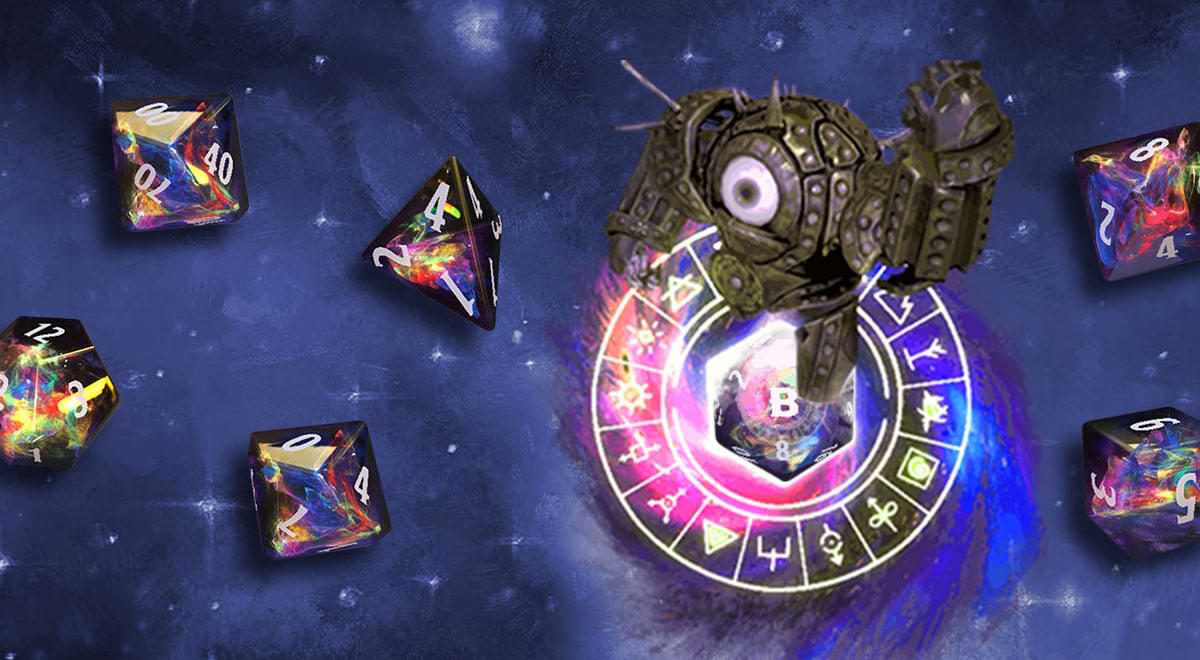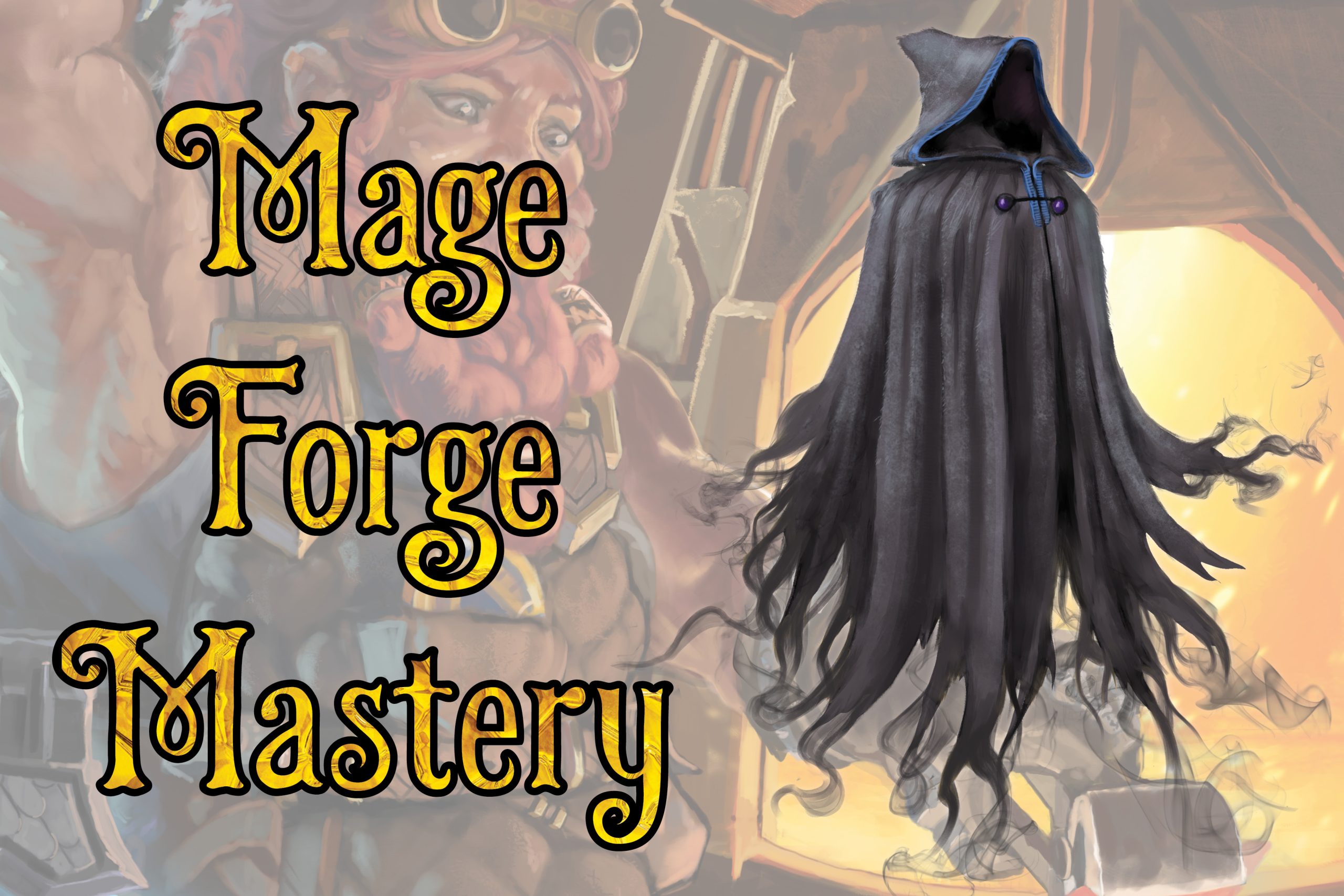
Mage Forge Mastery for 5E D&D — Bloodstained Crown
One of the awesome Mage Forge backers suggested we share some ideas for introducing new magic items into campaigns so we developed the free Spirit of the Forge encounter. We like the suggestion so much we decided to expand on it through this new Mage Forge Mastery series where we go much further presenting plot hooks along with formulae and recipes for crafting magic items to a deeper degree than the system in the free encounter. Let’s get into it.
Bloodstained Crown
I’m following up our first Mage Forge Mastery post with one of the magic items from the collection of 250 magic items I created myself. A Nerdarchy video from back in 2017 where the guys brainstormed ideas for a goatfolk race inspired me to come up with a whole bunch of content including the playable race of goatfolk called Oreamnos, a new background, eight magic items, two new creatures and an adventure spotlighting two opposing organizations.
From a secret stronghold carefully concealed high in the mountains, the Order of the Wizened guard vast repositories of ancient knowledge. Cursed by Baphomet for stubborn refusal of its gifts the Oreamnos, or goat folk, now act as guardians against the Horned King’s return to the world. These sentinels of civilization are ever watchful for agents of the Labyrinth, devotees of the demon lord ever plotting to reach the secluded stronghold and seize the knowledge within. And they need the help of heroes!
One of those magic items is the Bloodstained Crown and as you can see in the thumbnail illustration the very rare magic item is a crude headpiece is fashioned of bloodstained tusks lashed together with sinew and tufts of coarse fur soaked in blood. The powerful wondrous item’s origins stem from the conflict between the Order of the Wizened and their enemies — the forces of Baphomet called the Labyrinth. Those who wear a Bloodstained Crown can inflict their own demonic madness on others.
Crafting by the book
Players can find information on crafting right in the Basic Rules and Player’s Handbook as an option for downtime activities. This only gets you so far though, but you could start from scratch and craft the crown yourself. Basically you must be proficient with the appropriate tools — jeweler’s tools sounds appropriate — plus have the necessary materials and spend one day crafting for every 5 gp of the item’s value.
There’s nothing in the PHB equipment lists analogous to a crown but there is an item with a bit of helpful description to act as a guideline. One of the druidic focus examples is a totem, which is an object incorporating feathers, fur, bones and teeth from sacred animals. This sounds right in line with a headpiece fashioned from animals parts. A totem shows a very low 1 gp cost too. This means crafting the object used for later enchanting takes but a single day to create.
Alternatively you could follow the guidelines in Xanathar’s Guide to Everything when it comes to crafting an item, which also includes details for magic items too. In this model a crafter needs raw materials worth half the item’s selling cost, which averaging out the cost of various materials comes to about 5 sp. This method uses workweeks and crown production remains at only a portion of one day’s work.
The next step is enchanting it with powerful magic. XGtE incorporates this aspect into crafting as well and indicates a long term process requiring more than time, effort and materials. Magic items call for special materials along with knowledge of the crafting process by way of a formula to provide details steps characters must follow to create such a thing.
That’s where Mage Forge Mastery comes in.
Crafting by the plot
One of the concepts we keep in mind whenever designing any kind of game content is how it can lead to more engaging situations for players. Many of the magic items from the Mage Forge collection come from our own campaigns and became important aspects of the characters who carried them, a quality we hope comes through in your own games. Sometimes characters took the initiative to craft their own customized magic items while others motivated them to learn about the items’ origin and legacy. In all those cases the common factor is player driven decision making.
We created Spirit of the Forge to provide a quick and easy way for GMs to make magic items more prominent in their games with a baked in way to mitigate the potential for over abundance leading to imbalances. If you’ve got a set of 250 magic items we want you to be able to make the most of the collection!
The crafting guidelines in XGtE present the idea of magic item crafting as a pathway to adventure by suggesting the need for exotic materials along with a chart showing the challenge rating of a creature from which the material can be obtained. The book wisely points out this need not require killing the creature but rather the challenge level adventurers must overcome to gain access to the resource. According to these guidelines a CR 13-18 creature represents the appropriate challenge.
Another chart details the crafting time in workweeks and cost, both based on rarity with a note about consumable items requiring only half the indicated gold piece cost as well as needing the proper tool proficiency. There’s yet another chart with a variety of complications crafters may face along the way, which occur on a 10 percent chance for every five workweeks spent on crafting basis.
In the case of our Bloodstained Crown this all translates to…
- Obtain formula
- Overcome CR 13-18 creature for access to exotic material
- Crafting requires 25 workweeks
- Crafting costs 20,000 gp
- 50% chance for complication
The material in XGtE builds on the concept presented in the PHB by incorporating magic items into the mix. In contrast with 3.5 D&D’s magic item crafting system, which relied on a series of feats and put control of the process squarely in the players’ hands, in 5E D&D there’s a middle ground. The impetus for crafting a magic item lies with the player but includes the DM with the expectation of adventure required for obtaining the means and material for creation. Now we get to the heart of Mage Forge Mastery — ideas for DMs to reward players for their self-motivated enterprise.

Awakened to an endless night, vampires hunger for the life they have lost and sate that hunger by drinking the blood of the living. Vampires abhor sunlight, for its touch burns them. They never cast shadows or reflections, and any vampire wishing to move unnoticed among the living keeps to the darkness and far from reflective surfaces. [Image courtesy Wizards of the Coast]
Plot Hooks — Bloodstained Crown
The Order of the Wizened, cursed by Baphomet after tampering with forces they did not fully understand, have taken an oath to combat the demon lord’s influence in the world. Agents of Baphomet called the Labyrinth work endlessly to undermine the Wizened and mislead their scholarly pursuits. Both sides in this conflict have developed specialized magical items to aid their pursuits — the Wizened in seeking knowledge and the Labyrinth in brutally suppressing it.
A Bloodstained Crown excellently encapsulates the mission of the Labyrinth because its power seeks to negate logical thinking. The origins of the item may lie with brutal demonic forces but looking at it another way such a magic item could represent the wild whimsy of fey too. If your games explore deeper fey lore perhaps such an item is associated with the Unseelie Court. A wildly chaotic fey entity may bequeath a very rare Bloodstained Crown on their minions to spread madness in the Material Plane.
There’s 150 5E D&D creatures in the CR 13-18 range, with only two of those being the fey creature type and they’re both individual NPCs, neither of which jump out at me as appropriate for a strong narrative related to a Bloodstained Crown. Also we generally strive to stick with content from the free Basic Rules in material like this so it’s more universally useful. The list gets reduced to a mere 22 creatures this way and they’re mostly various dragons. There’s a few fiends in the mix but none of them particularly scream bloody madness at me. There is one creature who does though — vampires!
Vampires in 5E D&D are CR 13 undead creatures and their blood game is on point. I could absolutely envision a brutal vampire who relishes in blood with a mind to sow distress among a population. The effect created by a Bloodstained Crown feel in line with one of a vampire’s most notable features in the form of Charm, which dominates a victim’s will and makes them do things they might not otherwise. Obtaining the blood of such a vampire as part of the quest to craft such a magic item sounds like a fantastic scenario. Adventurers need not even vanquish the vampire completely. Infiltrating a vampire stronghold and absconding with a measure of blood sounds quite challenging to me.
Off the top of my head I’d consider a scenario in which a vampire keeps a storehouse of blood drawn from their victims over the centuries. This could be the blood of their spawn, the common folk under their sway in a region or even a variety of different types of blood from all sorts of creatures. Perhaps the formula obtained by the crafter calls for blood from a certain kind of creature or a specific individual, which leads adventurers to a terrifying dark castle they’ve learned stores such substances.
How these elements play out in your games is up to you and your group. What we hope to get across with this Mage Forge Mastery series is how a single magic item can inspire a tremendous amount of storytelling and adventure potential and most importantly how these things evoke player driven action. In this case not only can the quest to craft a Bloodstained Crown lead adventurers to a vampire’s lair but also may encourage greater heroism as the group learns more about the undead menace. They started off searching for a special ingredient for their magic item crafting and wind up possibly putting a stop to a centuries old evil threat.
Through a character’s desire to craft this magic item you’ve introduced some compelling circumstances into your campaign.
- Undead threat with a nefarious plan
- Intriguing scenario of seemingly random instances of people losing their minds
- Possibility for a dungeon crawl through a vampire’s castle lair
- Magic item with dark undertones calling into question an adventurer’s motives
Hopefully I’ve given you some intriguing ideas to play with in your own 5E D&D experiences. Let us know if this sort of stuff is useful for you, what else you’d like to see in these posts and whatever other feedback or takeaways you’ve got to share.
You can find our Spirit of the Forge encounter including a sentient artifact, forge geist monster and magic item crafting procedures right here and the Mage Forge project that inspired it with 250 magic items to your game right here. And until next time, stay nerdy!
*Featured image — Mage Forge Mastery explores ideas and concepts for discovering and crafting magic items you can drop right into your 5E D&D games. You can find all these posts through the Mage Forge Mastery category on the website here.







Pingback: Gems, Gear, and Greatness: Crafting Legendary D&D Tales with Magic Items! – Nerdarchy
October 10, 2023 at 12:46 pm